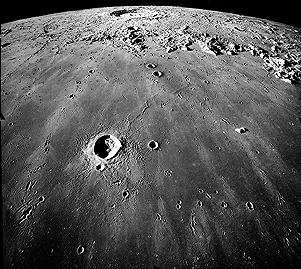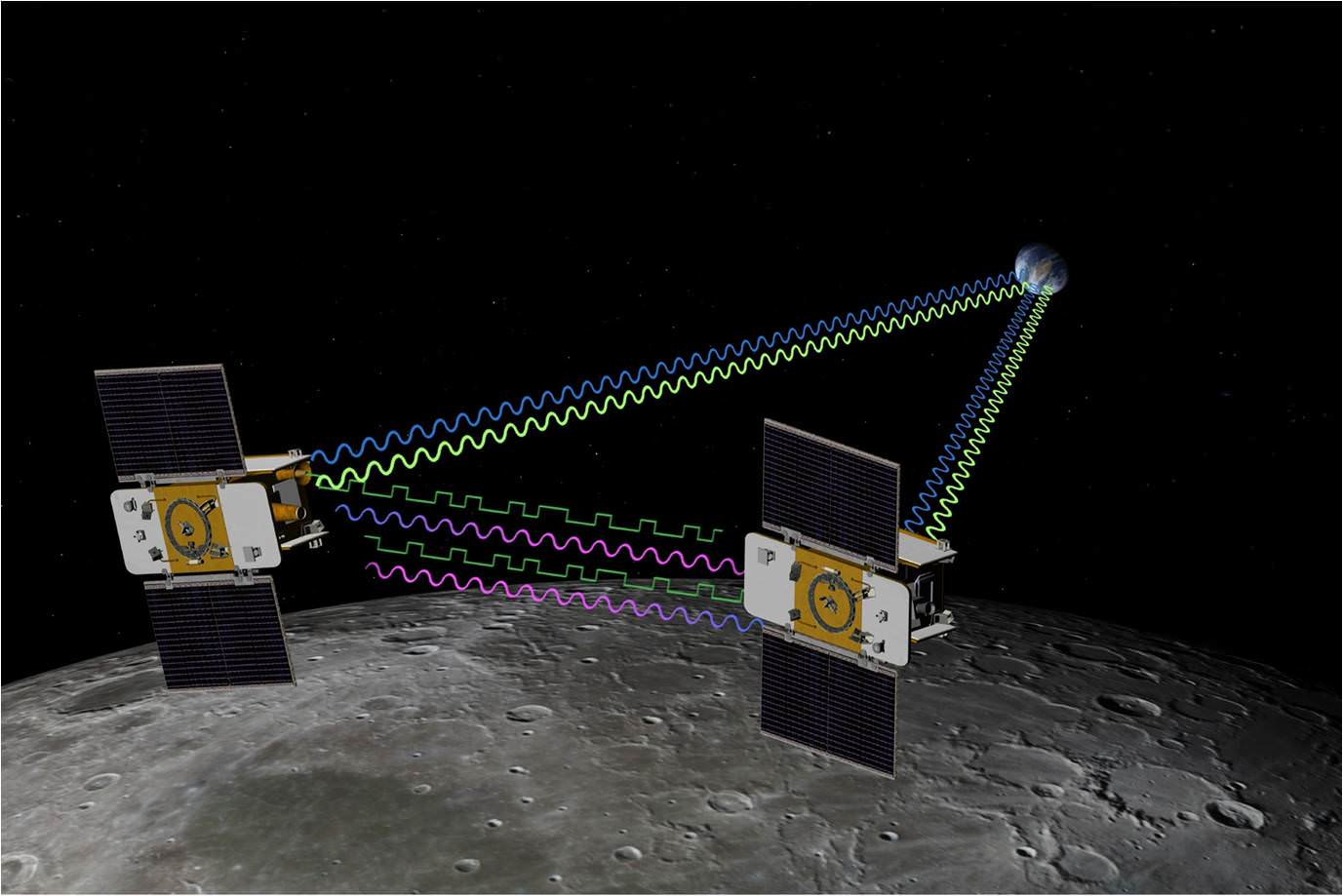The moon’s gravity has been a headache ever since the Apollo era. Areas of “mass concentration” or mascons, discovered in 1968, affected spacecraft orbits and made landing on Earth’s neighbor a tricky challenge.
The phenomenon has puzzled scientists, but new data shows that mascons might have come to be after asteroids or comets hit the moon a long time ago.
For nine months last year, until their mission ended with a deliberate crash on a moon mountain, twin washing-machine sized spacecraft Ebb and Flow circled the planet. Their work was known as the GRAIL mission (also known as Gravity Recovery and Interior Laboratory.) As they orbited together, gravity changes in the moon below them slightly changed their distances to each other — sometimes closer, sometimes further.
This allowed scientists to map out the mascons to high precision once they combined that information with computer models of big asteroid impacts as well as how craters on the moon evolved.

Mascons, which are invisible on the surface but appear in gravity maps as a sort of bulls-eye, arise “as a natural consequence of crater excavation, collapse and cooling following an impact,” NASA stated.
The center of the bulls-eye has stronger gravity, with a ring of weaker gravity surrounding the bulls-eye, and then another ring of strong gravity surrounding the bulls-eye and inner ring.
“GRAIL data confirm that lunar mascons were generated when large asteroids or comets impacted the ancient moon, when its interior was much hotter than it is now,” stated Jay Melosh, lead researcher and a GRAIL co-investigator at Purdue University.
“We believe the data from GRAIL show how the moon’s light crust and dense mantle combined with the shock of a large impact to create the distinctive pattern of density anomalies that we recognize as mascons.”
What’s more, researchers expect they’ll be able to apply that understanding to Mercury and Mars, as mascons were also discovered on those terrestrial planets.
The findings appeared in the May 30 edition of Science. You can read the entire article here.
Source: NASA

